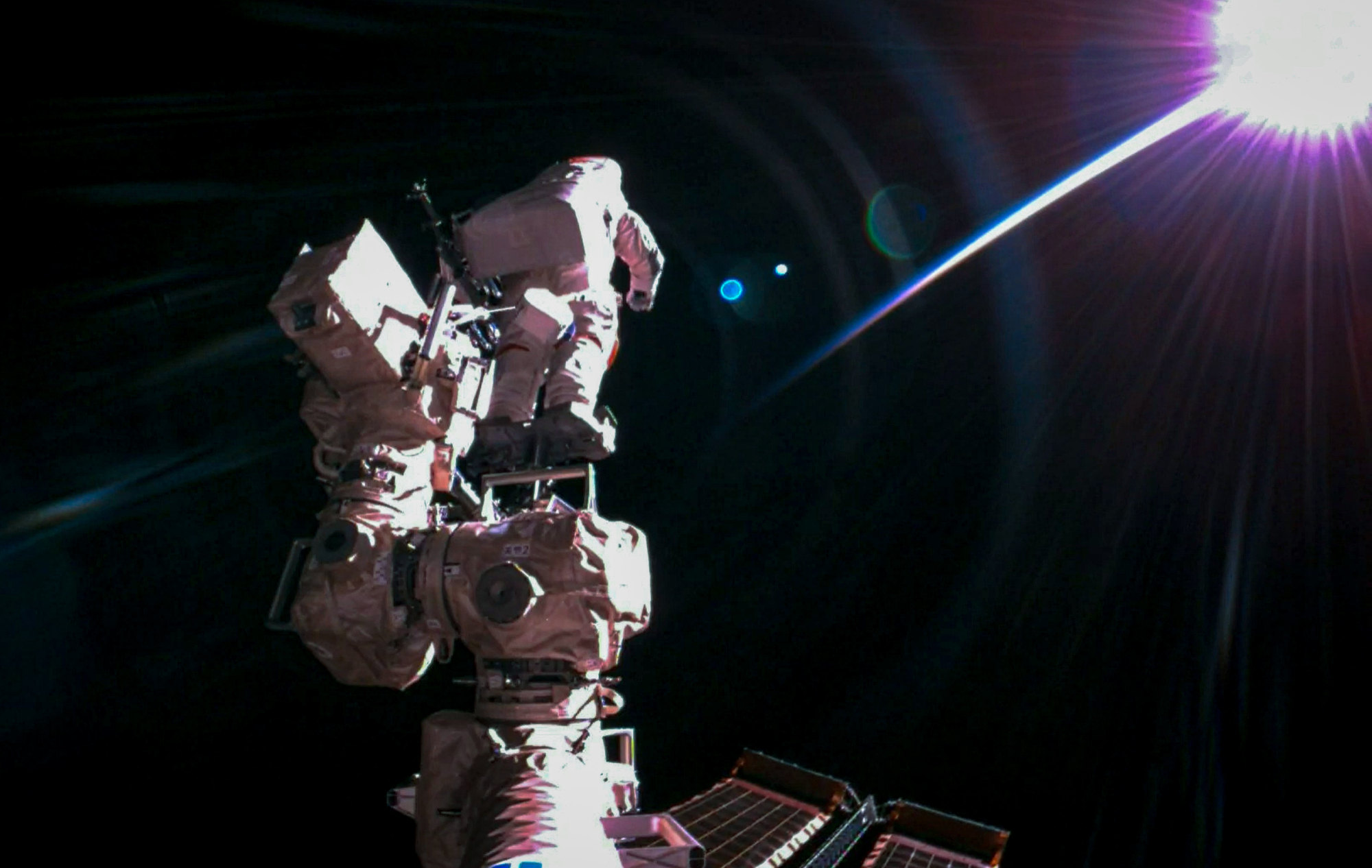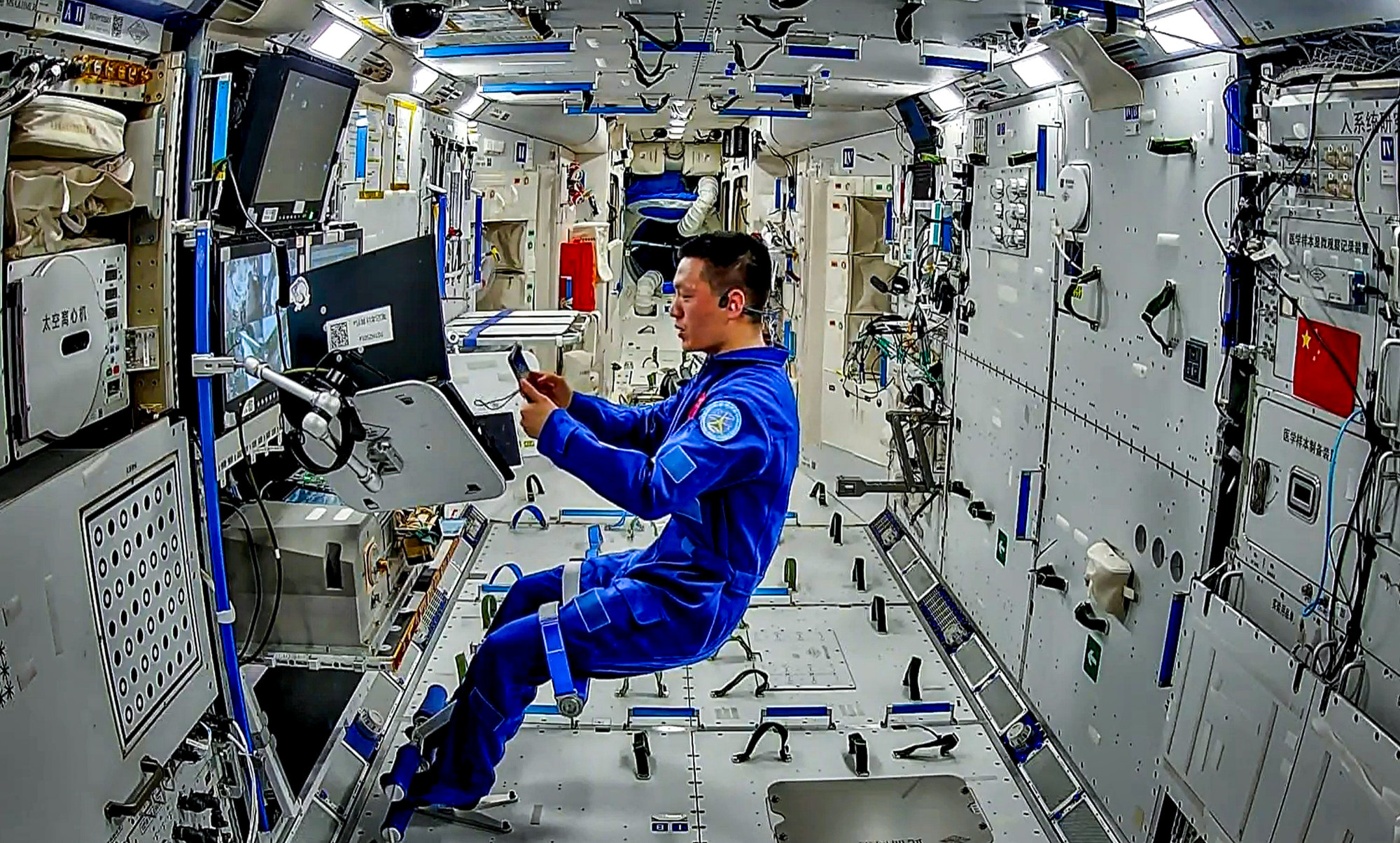Chinese astronauts complete record-breaking spacewalk to protect Tiangong space station from debris
“The astronauts had a lot to do this time, including taking pictures of various equipment they were checking on, and that’s why their walk took so long,” Zhang Wanxin, from the China Astronaut Research and Training Centre, told CCTV on Tuesday.
“The entire process went smoothly, and their operations were very accurate and successful,” Zhang said.

Li Xuedong, lead designer of the space station system from the China Aerospace Science and Technology Corporation, said the protection shields were installed because of debris impact on Wentian, one of Tiangong’s three major modules.
“They will be able to reduce damage caused by space debris and micrometeoroids in the long run,” Li told CCTV.
Tuesday’s EVA started at 10.35am Beijing Time when Ye Guangfu and Li Guangsu opened the hatch of the Wentian experiment module. Ye stepped outside and then onto a robotic arm, while Li handed him the debris protection devices to be installed, CMSA said.
The robotic arm then transferred Ye to the work site, where he put up power supply protection racks and other facilities. After that, Li joined Ye at around 12.20pm and the two inspected extravehicular equipment on patrol together.
The astronauts returned safely to the Wentian module at 6.58pm, according to CMSA. Before returning, Li also practised getting on and off the robotic arm. Li Cong, the third member of the Shenzhou-18 mission, stayed inside Tiangong to monitor his colleagues’ status.

The EVA was the first for Li Guangsu and the second for Ye, who also worked outside Tiangong in 2021 for about six hours as part of the Shenzhou-13 crew.
By comparison, there have been 270 spacewalks at the International Space Station since December 1998, according to Nasa. The longest ISS EVA was by US astronauts James Voss and Susan Helms in 2001, which lasted 8 hours and 56 minutes.